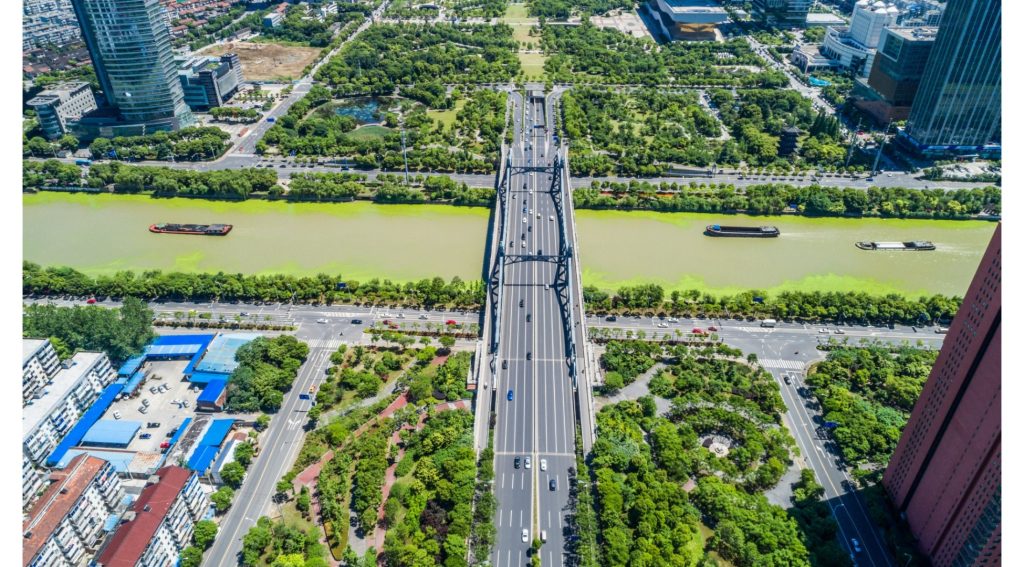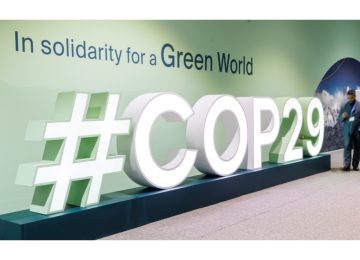
Urban planning is the cornerstone of how cities operate, change, and influence the lives of their residents is. Urban population growth exacerbates challenges like climate change, resource depletion, and infrastructure pressure, making future city planning critical. Urban planning is transforming to address these challenges with an emphasis on sustainability and resilience. The CII Indian Green Building Council (IGBC) is at the forefront of promoting sustainable urban development in India.
The Shift Towards Sustainable Urban Planning:
Sustainability is a necessity in urban planning. As cities expand, the environmental impact of urban sprawl can be devastating. Urban centres face numerous challenges, including increased energy consumption, air pollution, water scarcity, and inadequate waste management. This requires them to reduce their ecological footprint while enhancing the quality of life for residents.
One of the core pillars of sustainability in urban planning is the adoption of green buildings and infrastructure. Sustainable urban design promotes the use of energy-efficient systems, renewable energy, and water-saving technologies. Cities worldwide are embracing green infrastructure, including natural and semi-natural systems such as green roofs, urban forests, and open spaces, to improve environmental benefits like heat reduction, stormwater management, and air quality.
Green infrastructure uses ecological processes to enhance urban resilience and liveability. IGBC is a leading organization in India that promotes green building standards and is actively involved in integrating sustainability into urban spaces. It is promoting environmentally responsible building practices through its rating systems, including IGBC Green Cities, IGBC Green Homes, and IGBC Green Townships.
Green Infrastructure
In India, and globally, urban planners are recognizing the importance of green infrastructure. Modern cities are now focusing on the integrated planning of green, blue, and grey infrastructure. This means combining ecological elements (green), water systems (blue), and built infrastructure (grey) to create resilient, climate-adaptive, and inclusive urban environments.
For instance, green corridors and permeable surfaces are being designed alongside transit-oriented development (TOD) to promote walkability, reduce vehicular emissions, and enhance connectivity. This integrated approach not only addresses environmental challenges but also enhances urban liveability, equity, and long-term economic viability.
In addition to these natural solutions, cities are also investing in green buildings that prioritize energy efficiency and sustainability.
Smart Waste Management
The future of urban planning will also see an increased focus on waste management and resource recovery. Cities worldwide generate significant waste, which can be addressed by promoting a circular economy to close the loop in urban ecosystems.
IGBC is actively promoting waste reduction initiatives through green building certifications that advocate recycling, composting, and reducing the use of non-biodegradable materials. IGBC advocates for circular urban planning to efficiently manage resources and minimize waste, promoting sustainable waste management systems that reduce ecological footprints.
Resilient Cities: Adapting to Climate Change
As climate change continues to impact urban areas, the need for resilient cities has become paramount. Resilience in urban planning refers to a city’s ability to absorb and recover from the stresses and shocks caused by climate change, such as extreme weather events, flooding, heatwaves, and rising sea levels. Cities must become adaptable and responsive to the challenges posed by these changes.
Climate-Resilient Infrastructure
Urban planners are increasingly focusing on building infrastructure that can withstand the stresses of climate change. This includes flood-resistant buildings, improved drainage systems, and urban landscapes designed to absorb and manage stormwater. Nature-based solutions, such as wetland restoration and green infrastructure, are gaining traction as effective tools for mitigating the effects of extreme weather and contributing to biodiversity.
Additionally, there is a growing emphasis on building materials that are durable, energy-efficient, and low in carbon emissions. By incorporating these materials into city planning, urban areas can enhance their resilience while also reducing their overall environmental footprint.
Policy Advocacy and Industry Collaboration
Promoting sustainable urban planning requires a strategic blend of policy advocacy and industry collaboration. By aligning regulations with sustainability goals, governments can create enabling environments for change. At the same time, industry stakeholders bring innovation, technical expertise, and scalable solutions through partnerships, smart technologies, and responsible construction practices. Together, this synergy fosters resilient cities that balance growth with environmental stewardship and social equity, making urban sustainability a shared responsibility.
In addition to its rating systems, IGBC plays a critical role in policy advocacy. The council collaborates with government agencies, private companies, and stakeholders to promote sustainable urban planning through stronger regulations and policies, ensuring sustainability principles are integrated into the planning process.
Furthermore, IGBC is actively involved in capacity building and training programs for urban planners, architects, developers, and other professionals in urban development. This ensures that the workforce is well-equipped to design and implement sustainable solutions for cities.
Community Engagement
Citizen engagement plays a vital role in building green and sustainable cities. By involving residents, community groups, and local associations in planning processes, cities can ensure that development reflects the needs and aspirations of the people. Initiatives like public consultations, digital platforms, and participatory events promote transparency and inclusivity, making urban transformation more effective and citizen centric.
Public Transport and Active Mobility
Public transportation systems that are energy-efficient and dependable are central to sustainable urban mobility. Buses, trams, and metro systems powered by clean energy are key to reducing the carbon footprint of transportation. Additionally, walking and cycling infrastructure should be expanded to encourage active mobility, reduce traffic congestion, and promote healthier lifestyles.
Promoting electric vehicles and developing charging infrastructure is crucial for a sustainable urban future. These cleaner alternatives reduce air pollution and greenhouse gas emissions. Integrating EV charging stations supports demand and promotes widespread adoption.
The Path Forward: Integrating Sustainability and Resilience
Looking ahead, the future of urban planning will be defined by the integration of sustainability and resilience into every aspect of city development. Continued collaboration between urban planners, architects, developers, helps address the newer challenges at city level through building up on exemplary design and operational excellence of IGBC certified buildings and built environment to shape a greener future.
Urban planning must go beyond meeting the needs of the present. It must also anticipate future challenges—whether it is dealing with climate change, managing rapid urbanization, or ensuring equitable access to resources. By embracing sustainable practices and resilient infrastructure, cities can ensure they remain liveable, adaptable, and healthy for generations to come.
The council’s influence will remain a guiding force, providing the tools, resources, and certifications that help urban planners create cities that are truly future-ready.
Conclusion
The future of urban planning is bright and filled with promises. By focusing on sustainability and resilience, cities can transform into thriving, green hubs that are prepared for the challenges of tomorrow. Urban planning must embrace modern technologies, sustainable design principles, and policies that encourage green infrastructure, energy-efficient buildings, and sustainable transportation.
The continued shift toward sustainable urban planning is essential to ensuring that cities not only survive but thrive in an increasingly uncertain world.
Anand is the Deputy Executive Director, CII Indian Green Building Council. Views expressed are personal











